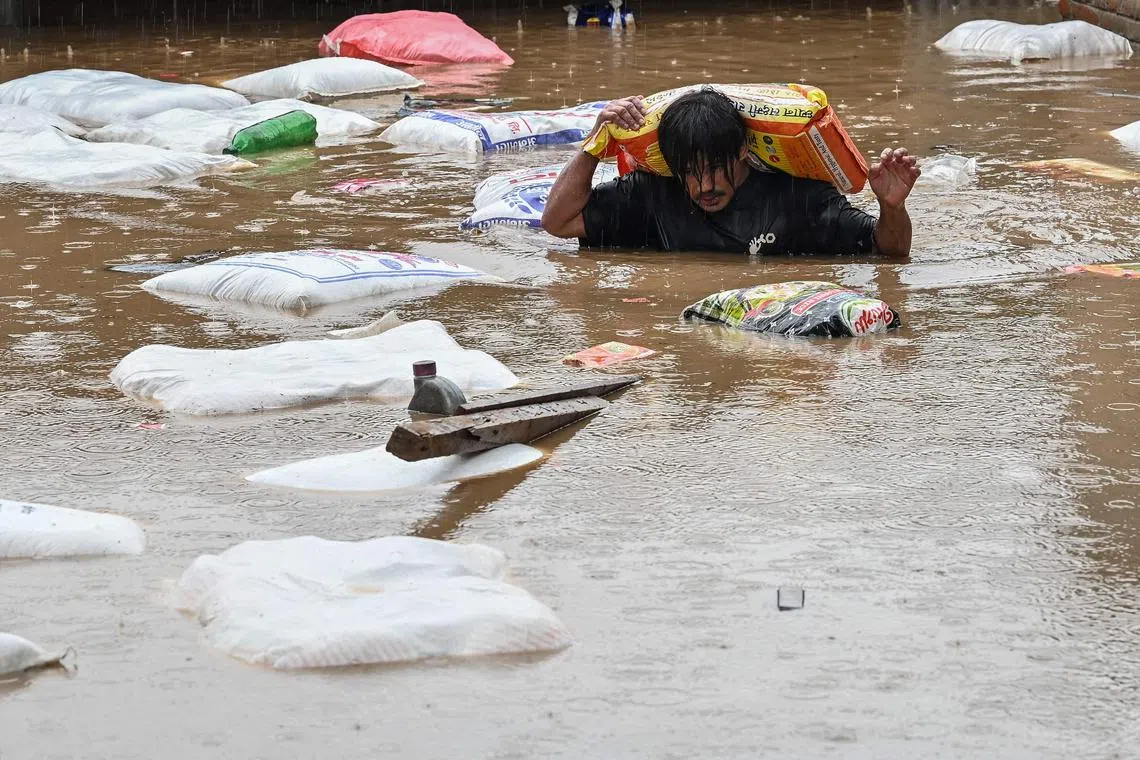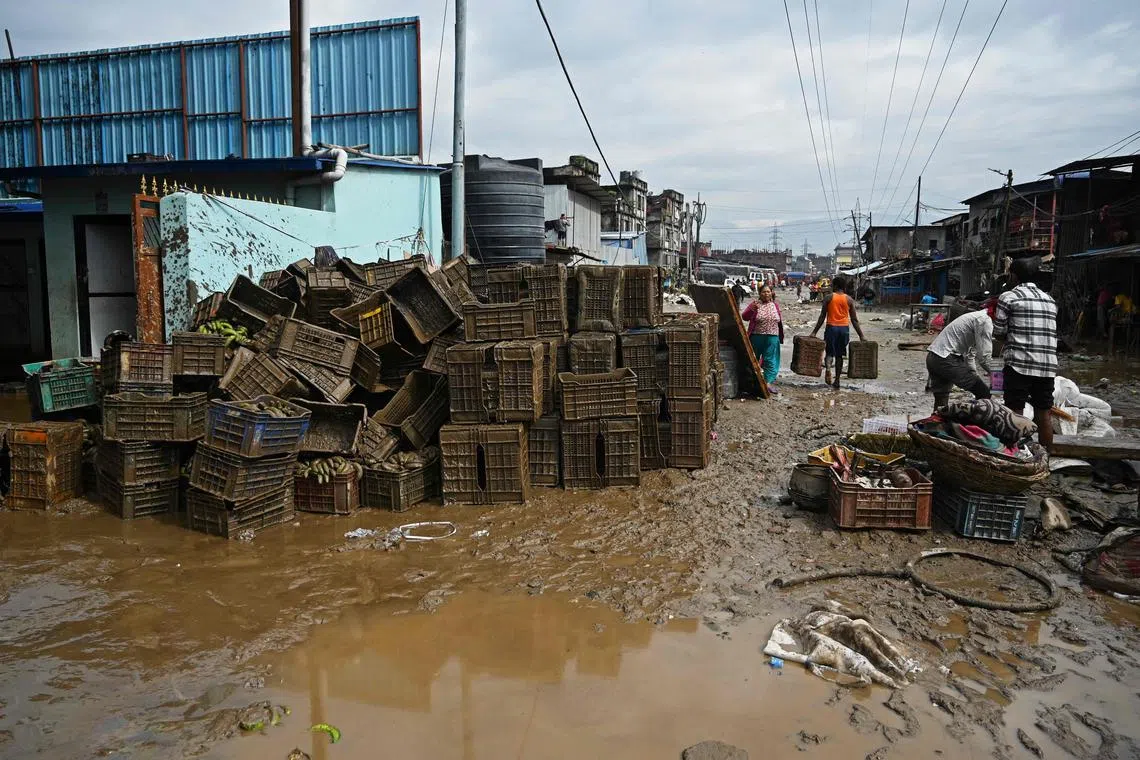Nepal surveys flood wreckage as death toll reaches 200
Sign up now: Get insights on Asia's fast-moving developments

A man wading through chest-deep floodwater after the Bagmati River overflowed following heavy monsoon rains in Kathmandu, on Sept 28.
PHOTO: AFP
Follow topic:
KATHMANDU – Search and rescue teams in Nepal’s capital picked through wrecked homes on Sept 30 after water levels receded from monsoon floods that killed at least 200 people around the Himalayan republic.
Deadly floods and landslides are common across South Asia during the monsoon season from June to September, but experts say climate change is making them worse.
Entire neighbourhoods in Kathmandu were inundated after the heaviest rain in more than two decades,
“According to the latest figures, 200 have died, 127 are injured and 26 are still missing,” Home Ministry spokesman Rishi Ram Tiwari told AFP.
Police said at least 35 of those killed were buried alive when earth from a landslide careened onto vehicles on a highway south of Kathmandu.
Mr Kumar Tamang, who lives in a slum area by a riverbank, told AFP that he and his family had to flee after midnight on Sept 28 as water rushed into his shack.
“This morning, we returned and everything looks different,” the 40-year-old said.
“We couldn’t even open the doors to our house – it was jammed with mud,” he added. “Yesterday, we were afraid that the water would kill us, but today, we have no water to clean.”
The Home Ministry said it was working to rescue numerous people who had been stranded on the highways.
Rescuers in knee-high rubber boots, meanwhile, were using shovels to clear mud from the worst-hit riverside neighbourhoods around Kathmandu, many of them unauthorised slum settlements.
The International Centre for Integrated Mountain Development, a Nepal-based think tank, said the disaster had been made worse by unplanned urban encroachment around the Bagmati River, which courses through the capital.
Nepal’s army said that more than 4,000 people had been rescued, with helicopters, motorboats and rafts used to carry stranded households to safety.
Bulldozers were being used to clear nearly two dozen sections of major highways leading into Kathmandu that had been blocked by debris.
“All of it is stuck”
Merchants in Kathmandu said that damage to intercity roads had drastically cut the supply of fresh fruit and vegetables into the capital.
“The farmers have their produce ready but with the highways blocked, all of it is stuck,” Mr Binay Shrestha, who works at one of the city’s main produce markets, told AFP.

Flooded streets after the Bishnumati River overflowed during monsoon rains in Kathmandu, on Sept 28.
PHOTO: AFP
Nepal’s weather bureau said preliminary data from stations in 14 districts measured record-breaking rain in the 24 hours to the morning of Sept 28.
A monitoring station at the Kathmandu airport recorded about 240mm of rain, the highest figure since 2002.
The Bagmati River and its numerous tributaries that cut through Kathmandu broke their banks, inundating nearby homes and vehicles after midnight on Sept 28.
Residents struggled through chest-deep water to get to higher ground.
Ms Bishnu Maya Shrestha, who lived in another inundated area of Kathmandu, said people had to cut through the roof of their homes to escape.
“We jumped from one roof to another to safety and, finally, they came with boats to rescue us,” Ms Shrestha told AFP.
Humanitarian organisations are also helping with search and rescue operations, as well as providing relief.
Mr Jagan Chapagain, head of the International Federation of Red Cross and Red Crescent Societies, said in a post on social media platform X that staff and volunteers were “distributing non-food items, providing hygiene kits, and setting up evacuation centres”.
The summer monsoon from July to September brings South Asia 70 per cent to 80 per cent of its annual rainfall and is vital for agriculture and food production in a region home to around two billion people.

Residents removing mud and debris outside their houses in a flood-affected area following heavy monsoon rains in Kathmandu, on Sept 29.
PHOTO: AFP
But monsoon rains also bring widespread death and destruction in the form of floods and landslides.
Experts say climate change has worsened their frequency and intensity.
A landslide that hit a road in Chitwan district in July pushed two buses with 59 passengers aboard into a river.
Three people were able to escape alive, but the authorities managed to recover only 20 bodies from the accident, with raging floodwaters impeding the search.
More than 300 people have died in Nepal in rain-related disasters in 2024. AFP

